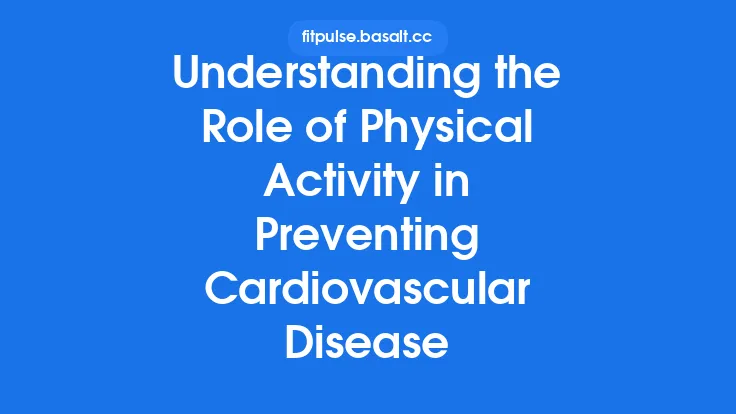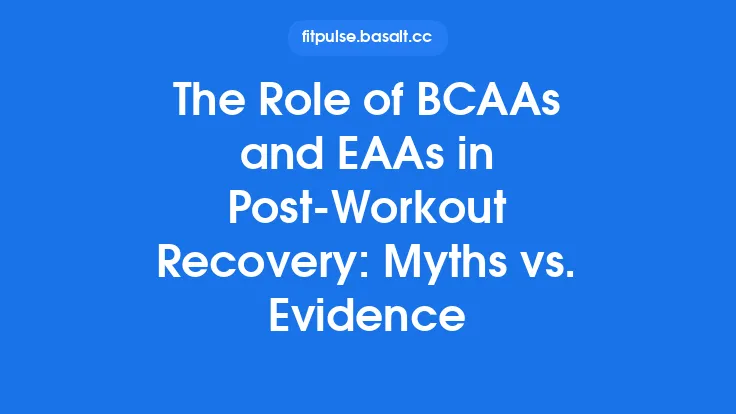Systematic reviews and meta‑analyses have become the cornerstone of evidence synthesis in fitness research. By aggregating data from multiple primary studies, they provide a clearer picture of what the collective body of research tells us about training interventions, physiological adaptations, and health outcomes. Understanding how these tools work, what they can (and cannot) reveal, and how to interpret their findings is essential for anyone who wants to stay grounded in the most reliable evidence while designing or evaluating exercise programs.
What Is a Systematic Review?
A systematic review is a structured, transparent, and reproducible method for identifying, evaluating, and summarizing all relevant research on a specific question. Unlike narrative reviews, which may be selective or anecdotal, systematic reviews follow a pre‑specified protocol that outlines:
- The research question – usually framed using the PICO format (Population, Intervention, Comparator, Outcome).
- Eligibility criteria – explicit inclusion and exclusion rules (e.g., study design, participant age, training modality).
- Search strategy – comprehensive searches across multiple databases (PubMed, SPORTDiscus, Web of Science, etc.) and gray literature sources.
- Study selection process – typically performed by at least two independent reviewers to minimize bias.
- Data extraction – systematic collection of key variables (sample size, intervention details, outcome measures, follow‑up duration).
- Quality appraisal – assessment of methodological rigor using tools such as the Cochrane Risk of Bias tool, the PEDro scale, or the Joanna Briggs Institute checklist.
The end product is a narrative synthesis that describes the state of the evidence, highlights gaps, and may set the stage for a quantitative meta‑analysis.
When and Why a Meta‑Analysis Is Added
A meta‑analysis is a statistical technique that combines the quantitative results of individual studies to produce a pooled effect estimate. It is appropriate when:
- Studies are sufficiently homogeneous in terms of participants, interventions, comparators, and outcomes (the “clinical” similarity).
- Effect sizes are reported (or can be derived) in a compatible metric (e.g., mean difference, standardized mean difference, odds ratio).
The primary advantages of a meta‑analysis in fitness research are:
- Increased statistical power – small, under‑powered trials can collectively reveal a true effect.
- Precision of estimates – narrower confidence intervals provide more reliable guidance for practice.
- Exploration of moderators – subgroup analyses or meta‑regression can identify factors (e.g., training volume, sex, age) that influence outcomes.
However, meta‑analysis is not a cure‑all; it can amplify bias if the underlying studies are flawed or if heterogeneity is ignored.
Core Statistical Concepts
Effect‑Size Metrics
| Metric | Typical Use in Fitness Research | Interpretation |
|---|---|---|
| Mean Difference (MD) | Direct comparison of outcomes measured on the same scale (e.g., VO₂max in mL·kg⁻¹·min⁻¹). | Positive MD indicates the intervention group performed better. |
| Standardized Mean Difference (SMD) | When studies use different scales (e.g., various strength tests). | Expressed in standard deviation units; 0.2 = small, 0.5 = medium, 0.8 = large effect. |
| Risk Ratio (RR) / Odds Ratio (OR) | Binary outcomes such as injury occurrence or meeting a health guideline. | RR > 1 indicates higher risk in the intervention group; OR is similar but less intuitive for common events. |
Fixed‑Effect vs. Random‑Effects Models
- Fixed‑effect model assumes a single true effect size; appropriate when heterogeneity is negligible (I² < 25%).
- Random‑effects model acknowledges that true effects may vary across studies; it incorporates between‑study variance (τ²) and is the default in most fitness meta‑analyses because training protocols rarely are identical.
Heterogeneity Assessment
- Cochran’s Q test – a chi‑square test for the presence of heterogeneity (p < 0.10 often used as a threshold).
- I² statistic – quantifies the proportion of total variation due to heterogeneity rather than chance.
- 0–25%: low heterogeneity
- 25–50%: moderate
- 50–75%: substantial
- >75%: considerable
When I² is high, investigators should explore sources of variability (e.g., training intensity, participant fitness level) through subgroup analyses or meta‑regression.
Publication Bias Detection
- Funnel plots – scatterplots of effect size against standard error; asymmetry may suggest missing small‑study results.
- Egger’s regression test – a formal statistical test for funnel‑plot asymmetry.
- Trim‑and‑fill method – estimates the number of missing studies and adjusts the pooled effect accordingly.
These tools help gauge whether the literature is skewed toward positive findings, a common concern in exercise science.
Conducting a Systematic Review: Step‑by‑Step Blueprint
- Define the Scope
- Formulate a clear, answerable question (e.g., “What is the effect of high‑intensity interval training (HIIT) on maximal aerobic capacity in sedentary adults?”).
- Register the protocol on platforms such as PROSPERO to promote transparency.
- Develop a Search Strategy
- Combine controlled vocabulary (MeSH, Emtree) with free‑text terms.
- Example: `(HIIT OR “high intensity interval training”) AND (VO2max OR “maximal aerobic capacity”) AND (adult* OR “sedentary”)`.
- Document date of search, databases, and any limits applied.
- Screen Titles/Abstracts and Full Texts
- Use reference‑management software (EndNote, Zotero) to remove duplicates.
- Apply a two‑reviewer system with a third reviewer to resolve disagreements.
- Extract Data Systematically
- Create a standardized extraction sheet (Excel, REDCap).
- Capture study identifiers, participant characteristics, intervention details (frequency, intensity, time, type), outcome measures, and statistical results.
- Assess Risk of Bias
- Choose an appropriate tool (e.g., Cochrane RoB 2 for RCTs, ROBINS‑I for non‑randomized designs).
- Rate each domain (selection, performance, detection, attrition, reporting) and generate an overall judgment.
- Synthesize Findings
- If meta‑analysis is feasible, compute pooled effect sizes using software such as RevMan, Comprehensive Meta‑Analysis, or the `meta` package in R.
- Conduct sensitivity analyses (e.g., removing high‑risk studies) to test robustness.
- Interpret Results in Context
- Discuss clinical relevance (e.g., does the pooled MD exceed the minimal clinically important difference for VO₂max?).
- Highlight limitations (heterogeneity, risk of bias, indirectness).
- Suggest future research directions (e.g., need for longer follow‑up, diverse populations).
- Report According to Standards
- Follow the PRISMA 2020 checklist (Preferred Reporting Items for Systematic Reviews and Meta‑Analyses).
- Include a flow diagram, detailed methods, and a transparent discussion of any deviations from the protocol.
Special Considerations for Fitness Research
1. Diversity of Outcome Measures
Fitness studies often report outcomes in different units (e.g., 1‑RM strength, power output in watts, sprint time in seconds). Converting these to a common metric via SMD or using conversion formulas (e.g., estimating power from velocity) is essential for meaningful pooling.
2. Training Dose and Periodization
Intervention fidelity varies widely: some trials use a single bout, others employ multi‑week programs with progressive overload. When heterogeneity is high, subgroup analyses based on training volume (sessions/week), intensity (% of HRmax or 1‑RM), and duration (weeks) can clarify dose‑response relationships.
3. Participant Baseline Fitness
The magnitude of adaptation often depends on the initial fitness level. Meta‑regression using baseline VO₂max, strength, or body composition as covariates can reveal whether novices benefit more than trained athletes.
4. Acute vs. Chronic Effects
Systematic reviews should distinguish between studies measuring immediate post‑exercise responses (e.g., hormone spikes) and those assessing long‑term adaptations (e.g., muscle hypertrophy after 12 weeks). Mixing these designs can obscure true training effects.
5. Use of Wearable Data
Although emerging methodologies are beyond the scope of this article, many recent fitness trials incorporate wearable-derived metrics (heart rate variability, step count). When such data are reported as secondary outcomes, reviewers must decide whether to include them in the primary synthesis or treat them separately.
Interpreting a Meta‑Analysis: From Numbers to Practice
- Magnitude of Effect
- Examine the pooled effect size and its confidence interval. A statistically significant result with a trivial effect may have limited practical relevance.
- Consistency
- Look at I² and the forest plot. If individual study estimates are widely scattered, the pooled estimate may be less trustworthy.
- Precision
- Narrow confidence intervals indicate high precision; wide intervals suggest uncertainty, often due to few studies or small sample sizes.
- Applicability
- Consider the population and setting of the included studies. If most trials involve young, healthy adults, extrapolating to older or clinical populations requires caution.
- Quality of Evidence
- The GRADE framework (Grading of Recommendations Assessment, Development and Evaluation) can be applied to rate confidence in the effect estimate (high, moderate, low, very low). Factors influencing the rating include risk of bias, inconsistency, indirectness, imprecision, and publication bias.
- Potential for Harm
- Even if an intervention improves performance, meta‑analyses should also report adverse events (e.g., injury rates). A favorable benefit‑risk balance is essential for recommending a training protocol.
Common Pitfalls and How to Avoid Them
| Pitfall | Why It Matters | Mitigation Strategy |
|---|---|---|
| Including non‑comparable outcomes | Inflates heterogeneity and yields meaningless pooled estimates. | Pre‑define outcome categories; use SMD only when scales differ substantially. |
| Failing to assess risk of bias | Low‑quality studies can dominate the pooled effect. | Conduct a rigorous RoB assessment and perform sensitivity analyses excluding high‑risk studies. |
| Over‑reliance on p‑values | Statistical significance does not equate to practical importance. | Emphasize effect size magnitude and confidence intervals. |
| Ignoring small‑study effects | Small trials often report larger effects due to publication bias. | Use funnel plots, Egger’s test, and trim‑and‑fill adjustments. |
| Pooling cross‑sectional with longitudinal designs | Different study designs answer different questions. | Separate analyses by design type or restrict inclusion to RCTs for causal inference. |
| Neglecting protocol deviations | Unplanned changes can introduce bias. | Document any deviations from the registered protocol and discuss their impact. |
Practical Example: HIIT and VO₂max in Adults
To illustrate the process, consider a hypothetical systematic review on the effect of high‑intensity interval training (HIIT) on maximal aerobic capacity (VO₂max) in adults aged 18‑65.
- Question (PICO)
- Population: Adults (18‑65) of any fitness level.
- Intervention: HIIT (≥4 weeks, ≥2 sessions/week).
- Comparator: Moderate‑intensity continuous training (MICT) or no exercise.
- Outcome: Change in VO₂max (mL·kg⁻¹·min⁻¹).
- Search & Selection
- Databases: PubMed, SPORTDiscus, Scopus.
- Yield: 1,254 records → 42 full‑text articles screened → 18 RCTs met criteria.
- Data Extraction
- Extracted mean change, SD, sample size for each arm.
- Risk of Bias
- 10 studies low risk, 5 moderate, 3 high (due to lack of blinding).
- Meta‑Analysis (Random‑Effects)
- Pooled MD = 3.8 mL·kg⁻¹·min⁻¹ (95% CI 2.4 to 5.2).
- I² = 48% (moderate heterogeneity).
- Subgroup Analyses
- Training volume: ≥3 sessions/week yielded MD = 5.1 vs. 2.6 for ≤2 sessions/week.
- Baseline fitness: Untrained participants showed larger gains (MD = 5.4) than trained (MD = 2.1).
- Publication Bias
- Funnel plot symmetric; Egger’s test p = 0.31 (no evidence of bias).
- GRADE
- Overall evidence rated moderate (downgraded for inconsistency).
Interpretation: HIIT produces a clinically meaningful increase in VO₂max, especially when performed ≥3 times per week and in previously untrained adults. The moderate heterogeneity suggests that program specifics (frequency, intensity) influence outcomes, underscoring the need for individualized prescription.
The Future Landscape of Systematic Synthesis in Fitness Research
While this article does not delve into emerging methodologies, it is worth noting that the principles outlined here will remain relevant as the field evolves. Whether integrating data from large‑scale wearable cohorts or applying network meta‑analysis to compare multiple training modalities simultaneously, the core steps—transparent protocol, rigorous search, systematic appraisal, and thoughtful synthesis—will continue to safeguard the credibility of evidence in exercise science.
Key Take‑aways
- Systematic reviews provide a comprehensive, unbiased snapshot of the literature; meta‑analyses add a quantitative layer that can clarify the magnitude and consistency of effects.
- Rigorous methodology (pre‑registered protocol, exhaustive search, dual review, risk‑of‑bias assessment) is essential to avoid amplifying existing study flaws.
- Understanding statistical concepts (effect‑size metrics, heterogeneity, model choice) empowers readers to interpret pooled results correctly.
- In fitness research, special attention to training dose, participant baseline, and outcome measurement diversity is crucial for meaningful synthesis.
- Transparent reporting (PRISMA, GRADE) and critical appraisal of the evidence hierarchy ensure that conclusions are both scientifically sound and practically useful.
By mastering these concepts, practitioners, researchers, and students can navigate the ever‑growing body of exercise science literature with confidence, translating robust evidence into effective, evidence‑based training strategies.




